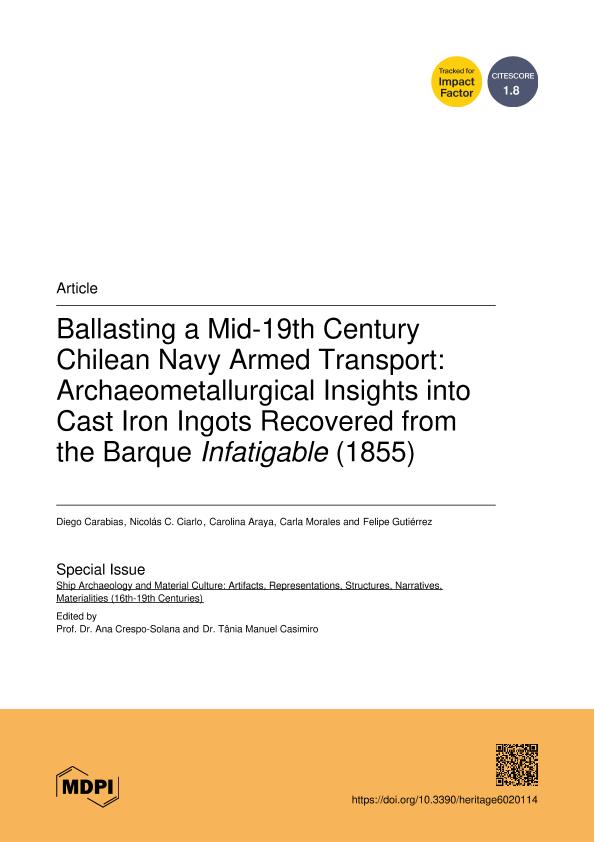Artículo
Ballasting a Mid-19th Century Chilean Navy Armed Transport: Archaeometallurgical Insights into Cast Iron Ingots Recovered from the Barque Infatigable (1855)
Fecha de publicación:
02/2023
Editorial:
Multidisciplinary Digital Publishing Institute
Revista:
Heritage
e-ISSN:
2571-9408
Idioma:
Inglés
Tipo de recurso:
Artículo publicado
Clasificación temática:
Resumen
Ballast is essential for vessels to lower their centre of gravity, improve stability, and ease their motion during sailing. During the modern period, heavy materials used for ballasting ships were an issue of particular concern for both authorities and ship owners, subjected to increasing control, regulation, and standardisation. These items represent a very common find in wreck sites and deserve special attention, as their characteristics, distribution, and provenance can deliver critical information for assessing where the vessel was ballasted, sailing routes, ship tonnage, and site formation processes. This article is centred on pig iron ingots, introduced in the early 18th century in sailing warships and shortly thereafter in sizeable merchant vessels, a type of ballast which is frequently overlooked in archaeological research. In particular, specimens retrieved from the Chilean Navy armed transport Infatigable (1855) were analysed through macroscopic and physicochemical characterisation using LM, SEM-EDS, WD-XRF, and IGF. The results obtained indicate the ingots were manufactured with cast iron of different quality, suggesting they may have come from different production centres. The investigation resulted in a better understanding of ballasting practices on a South American navy ship in the early post-independence period and provided new data for discussions of off-site and non-nautical technological issues, such as the materials, knowledge, and techniques associated with the production of pig iron in the mid-19th century.
Palabras clave:
ARMED TRANSPORT
,
BALLAST
,
CHILEAN NAVY
,
METALLURGY
,
NAUTICAL ARCHAEOLOGY
,
PIG IRON
Archivos asociados
Licencia
Identificadores
Colecciones
Articulos(SEDE CENTRAL)
Articulos de SEDE CENTRAL
Articulos de SEDE CENTRAL
Citación
Carabias, Diego; Ciarlo, Nicolás Carlos; Araya, Carolina; Morales, Carla; Gutiérrez, Felipe; Ballasting a Mid-19th Century Chilean Navy Armed Transport: Archaeometallurgical Insights into Cast Iron Ingots Recovered from the Barque Infatigable (1855); Multidisciplinary Digital Publishing Institute; Heritage; 6; 2; 2-2023; 2126-2151
Compartir
Altmétricas




